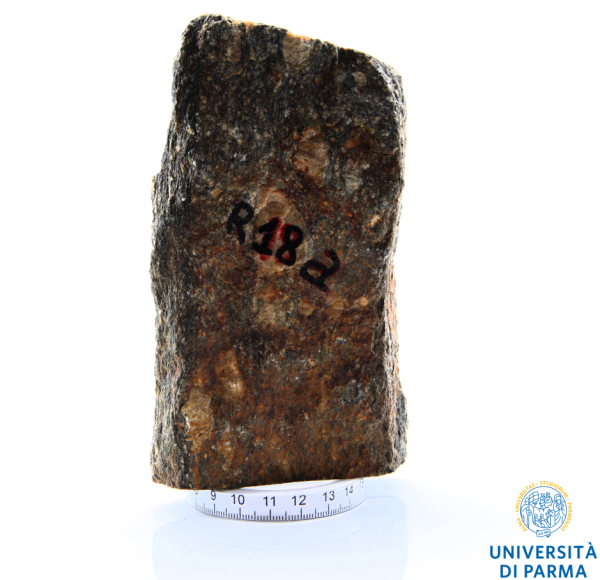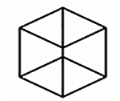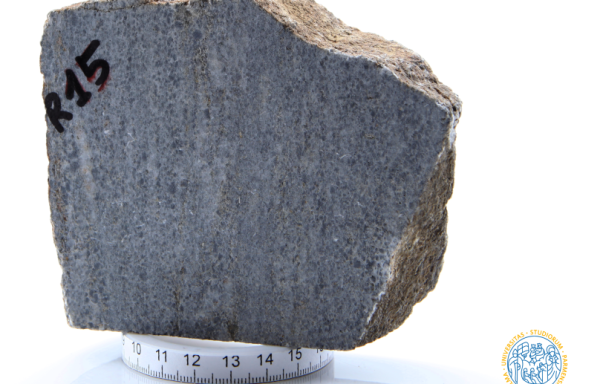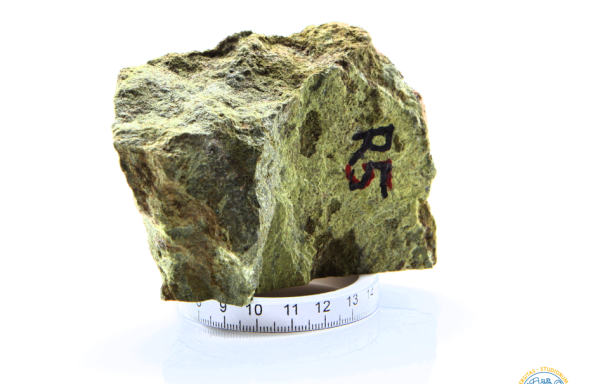Rock
Metamorphic rock with a foliation defined by the alignment of centimetric crystals with milky white colour (feldspar) surrounded by a medium-fine grained dark-coloured matrix. The granular minerals predominate (see the thin section observation) thus the rock can be classified as gneiss. The large feldspar crystals are relict grains of the original rock (protolith) that underwent deformation and metamorphism. These crystals are shaped like eyes, so this rock is referred to as “augen gneiss” after the German word “augen” which means “eye”. The rock sample comes from the orthogneiss body of the Porto-Vecchio area, exposed along the SE coast of Corsica Island (see the R18b amphibolite for further details). The orthogneiss protolith was a porphyritic granite.
Etymology: the term gneiss derives from German word “gneis” that means “glitter”.
Thin section descriprion:
The PPL view shows that the rock is mainly composed of colourless crystals: plagioclase (Pl) and alkali-feldspar (Afs), both showing slight clouding; quartz (Qz) that is relatively clear. The large grains seen in the XPL view are Pl and Afs crystals, that can be distinguished because the former often retain the igneous twinning while Afs is largely untwinned (see the tagged crystal). These large crystals are relict grains of the protolite, that was a porphyritic granite, and thus are said porphyroclast (or augen). In contrast to the feldspars, all the quartz of the granite underwent extensive recrystallization forming the fine-grained matrix surrounding the larger porphyroclast grains. In the PPL view, the small crystals showing light to dark green pleochroism are partly chloritized biotite (Bt), while the three crystals with the light to dark brown pleochroism are allanite (Aln), a Ce-bearing epidote.
| thin section PPL |
thin section XPL |
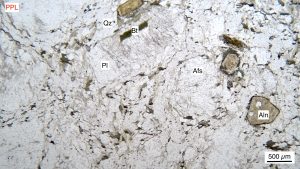 |
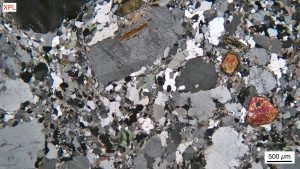 |
Map
PPL
XPL
Info
| Place: | Porto Vecchio (Corsica) |
| Classification: | ortogneiss |
| Specimen n°: | R18a |

